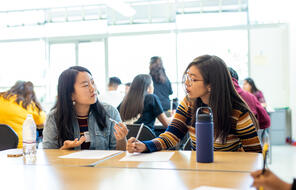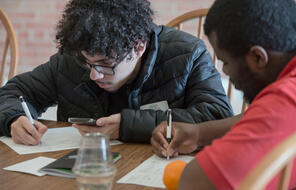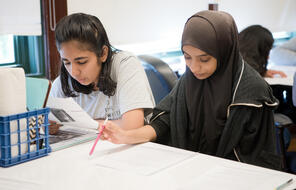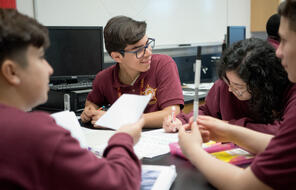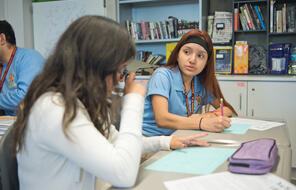
Rural, Urban, Suburban: Stories of Place
Duration
Two 50-min class periodsSubject
- English & Language Arts
Grade
11–12Language
English — USPublished
Get it in Google Drive!
Get everything you need including content from this page
Get it in Google Drive!
Get everything you need including content from this page
Overview
About This Lesson
As our relationship to the concept of home evolves in the face of mobility, technology, and changing social structures, it feels more imperative than ever to broaden the understanding of home to fully reflect the complexity of our personal and collective identities. Yet specific places can still hold power in our identities and our sense of where we belong in the world. This lesson investigates the dynamic interplay between place and identity, challenging students to explore their relationship with place and reconsider traditional notions of home.
Through image and research analysis activities, students confront potential biases and stereotypes about place-based identity and develop empathy for those from different backgrounds. Critical examination of self and others based on geographic distinctions lays the groundwork for subsequent texts and activities within the unit, encouraging students to reimagine home in ways that transcend physical and cultural borders. This enriches students’ sense of belonging in an increasingly interconnected world.
Lesson Materials
- Handout: Image Analysis: We Live Here
- Slideshow: Image Analysis: Images of Urban, Rural, and Suburban Areas
- Reading: How Urban, Suburban, and Rural Communities View One Another: Pew Research Study
- Handout: Analyzing Pew Research Data
Essential Questions
- How can reimagining “home” empower us to define how and where we belong in the world?
Guiding Questions
- How can where we live contribute to our sense of who we are?
- How does where we live influence the stories others construct about us?
Facing History Learning Outcomes
- Value the complexity of identity in themselves and others.
- Examine the many factors that can shape an individual’s identity.
Preparing to Teach
A Note to Teachers
Before teaching this lesson, please review the following information to help guide your preparation process.
Lesson Plans
Day 1 Activities
Day 2 Activities
Unlimited Access to Learning. More Added Every Month.
Facing History & Ourselves is designed for educators who want to help students explore identity, think critically, grow emotionally, act ethically, and participate in civic life. It’s hard work, so we’ve developed some go-to professional learning opportunities to help you along the way.
Exploring ELA Text Selection with Julia Torres
On-Demand

Working for Justice, Equity and Civic Agency in Our Schools: A Conversation with Clint Smith
On-Demand

Centering Student Voices to Build Community and Agency
On-Demand






